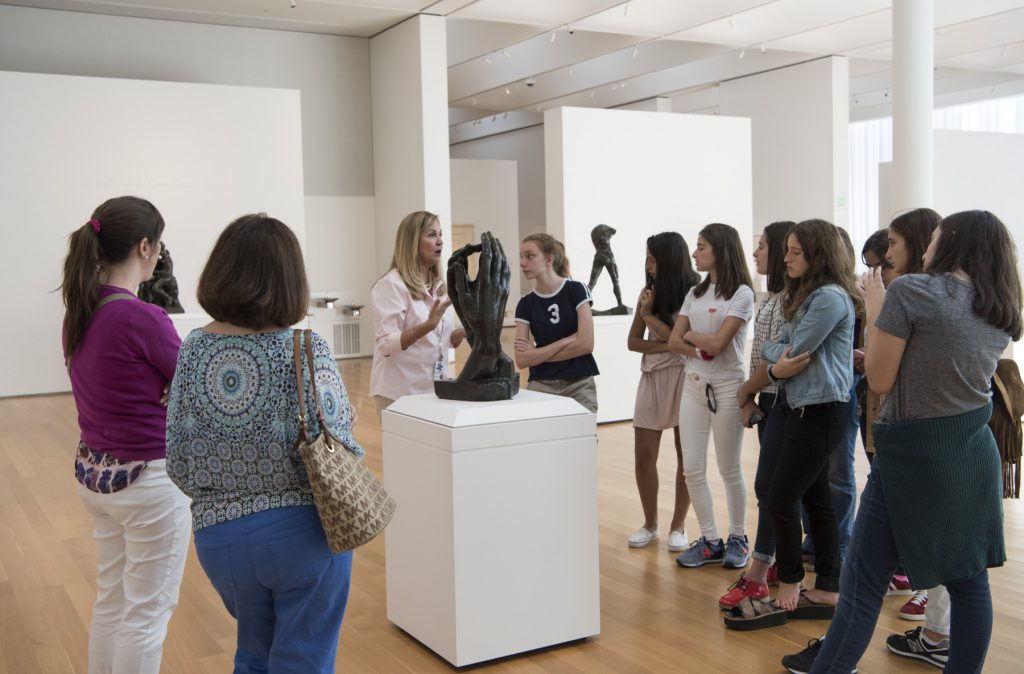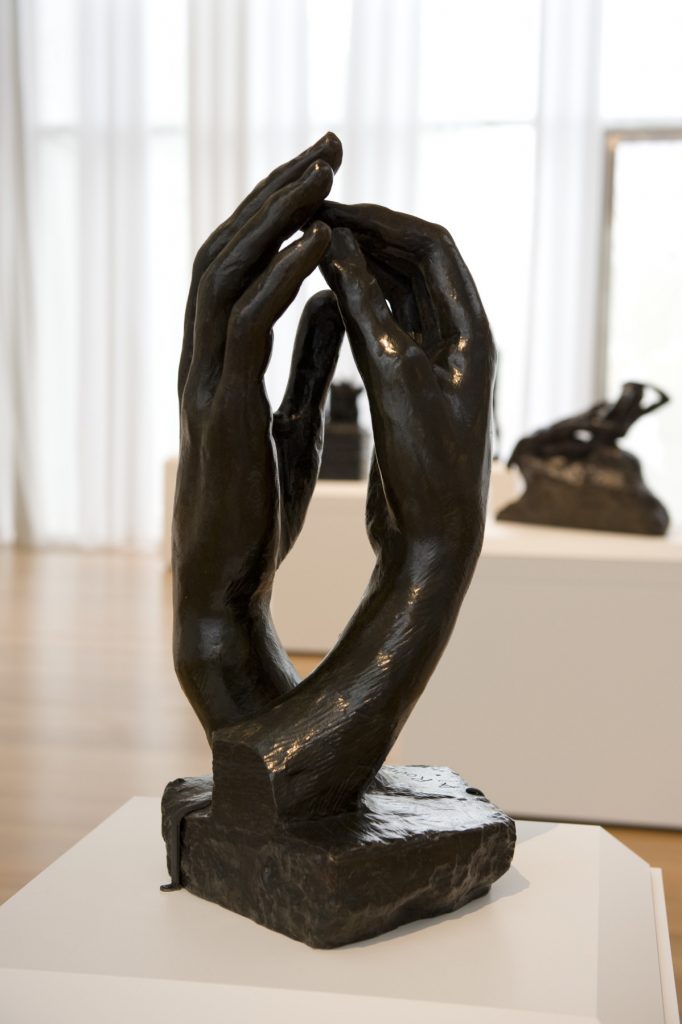The Cathedral (work of art)
Artwork Info
Key Ideas
- Auguste Rodin was inspired by the design of Gothic cathedrals. This sculpture resembles shapes found in Gothic architecture.
- This sculpture depicts two right hands that are barely touching each other. The hands belong to two different people. The gesture is similar to that of hands coming together in prayer.
- The work was renamed The Cathedral after Rodin published a book about French Gothic cathedrals. Before that it was called The Ark of the Covenant.
- This is a bronze cast of a sculpture that Rodin carved in stone in 1908.
Learn More
It is an example of Rodin’s skill that he could take a subject as simple as two hands and create such an expressive sculpture. The gesture is between two right hands (of two different people). The fingers are sculpted so that they reach toward and lightly touch one another, as if in prayer. The sculpture encourages the viewer to think about the relationship between the two people whose hands are depicted.
This sculpture was originally titled The Ark of the Covenant. It was renamed The Cathedral after Rodin published a book about French Gothic cathedrals in 1914. The form of this sculpture demonstrates Rodin’s interest in Gothic architecture. The shape of the hands resembles the vault of a Gothic cathedral.
The Cathedral is a bronze cast of a work that was originally carved in stone. Rodin completed the stone version in 1908. It was part of a series of sculptures of hands. Other works from this series include The Hand of God, The Hand of the Devil, Hands of Lovers, and Hand from the Tomb.
Additional Resources
Resources for Teachers:
- Learn more about Auguste Rodin and view an online gallery of his sculptures.
- Explore a lesson plan to spark ideas for incorporating this sculpture into classroom activities.
- Read a blog post about The Cathedral.
- Watch a video visit with NCMA curator Michele Frederick talking about Rodin’s sculptures.
Resources for Students:
- Explore family activities inspired by The Cathedral.
- Read poems inspired by this sculpture and try a poetry writing exercise.
- Watch a video about this sculpture.




